The continuing turmoil in Afghanistan and the entry of several players in Central Asia, in what has been called the New Great Game, is likely to get further complicated. This is due to the reported move of the US to pullout half their troops from Afghanistan. Against this backdrop it is worthwhile to take a step back and revisit the original ‘Great Game’ of the 19th century. Captain Arthur Conolly, a British officer of the Sixth Bengal Native Light Cavalry, is credited with coining the term the ‘Great Game’ in the 1830’s. Later, Rudyard Kipling immortalized the concept in his famous novel Kim.
The glamorous and fascinating aspect of the whole exercise was summed up a British author F Maclean thus, “For the greater part of the 19th century and after it up and down the length of Central Asia, from the Caspian to the Karakorum and the Khyber Pass to the confines of Siberia, throughout the whole of the vast, but rapidly narrowing ground that separated their respective Empires, Englishmen and Russians, and men of other races and nationalities too, played what they and their contemporaries called the Great Game. Played it from various motives and with varying degrees of success. Played it, on the whole, with courage and resourcefulness, with dash and initiative, and with no great attention to any particular set of rules. For a space, the attention of the world was focused on Central Asia. Men risked their lives to get there. Not many succeeded and not all of them returned to tell the tale…”1
In its essentials, the Great Game was a struggle for power, territorial control, and political dominance between the Russian and British Empires in Central Asia in the nineteenth century. But how did the whole concept of the Great Game evolve?
Against the backdrop of the expanding Tsarist Russia, the key British gambit was creating a buffer between its Indian possessions and the expanding Tsarist Russian empire. As Amir Abdur Rehman, the then ruler of Kabul had famously remarked, “My country is like a poor goat on whom the lion and the bear have both fixed their eyes, and without the protection of the Almighty Deliverer, the victim cannot hope to escape very long.” 2
Two British officers, Sir Henry Rawlinson3 and Sir Alfred Lyall4 developed the concept of a ‘Frontier of Separation,’ as opposed to the normal ‘Frontier of Contact.’ In a ‘Frontier of Contact’ the British and Russian empires would have a common border and be in direct conflict, but the ‘Frontier of Separation’ would provide a buffer between the two empires. For Rawlinson, due to the simultaneous expansion of the Indian and Russian Empires, contact between them had to be avoided. This could be done ‘by narrow strip of territory, a few hundred miles across’5 intervening between their political frontiers ….6 in effect, the creation of some form of protectorates to act as buffers. For Sir Alfred Lyall, ‘the true frontier was not coterminous with the limits of territory actually administered by the Government of India. Beyond this were areas that the Government of India insisted were vital to its security, but where it did not attempt to exercise any administrative control.’7
Implementation of the concept of the ‘Frontier of Separation’ led to a unique solution that was the Three-fold Frontier. The First Frontier was the outer limit of the directly administered territory of British India where full administrative control including British law and political systems were enforced. The Second Frontier was the area under “indirect control” where British law and administration, including taxation, was not applied.8 Responsibility for day-to-day administration in these areas was left to the tribal chiefs. The British exercised a veneer of control through the army. These ‘un-administered areas’, like the Indian princely states, had a certain degree of political autonomy but unlike them were not assimilated into mainstream Indian life. On the contrary, they maintained their separateness.9 The Third Frontier was the outer limit of the British area of influence. It was beyond defined boundaries and formed the protectorate or buffer states against Russian influence. These independent states were tied to the Government of India through treaties.
For example, Balochistan, or rather Kalat as it was then known, became part of this peculiar frontier structure of the Indian empire as the second frontier, the un-administered territory between the boundary of administration that defined Sindh and eventually the Durand Line, the delimited and demarcated boundary with Afghanistan.10
The last cog in this system was the Wakhan Corridor that was devised by the Anglo Russian Agreement of 1895. This cartographic buffer was a strip of land in the Pamir mountain range where the Chinese, Russian and British Indian empires bordered. It was a geographical barrier to prevent the contending empires from collision. The Wakhan corridor completed the Afghanistan buffer and effectively barricaded India.
Interestingly, the British forced the Amir of Afghanistan to accept the control of the Wakhan. The Amir objected to the gift, exclaiming that ‘he had enough problems with his own people and did not wish to be held responsible for the Kirghiz bandits in the Wakhan and Pamir.’11 The government of India paid him half a lakh of rupees (Pounds 5000 then) per annum to meet the cost of its administration. It was from the British point of view a moderate price to pay to secure north-eastern Afghanistan and the Hindukush against Russian penetration. 12
Fast-forward almost a century later.
In the late 1990s, some journalists used the expression "The New Great Game" to describe the renewed geopolitical interest in Central Asia based on the mineral wealth of the region that was becoming available to foreign interests after the dissolution of the Soviet Union. In fact, in 1997, the New York Times published an opinion piece titled ‘The New Great Game in Asia’ that stated, “Central Asia has again emerged as a murky battleground among big powers engaged in an old and rough geopolitical game. Western experts believe that the largely untapped oil and natural gas riches of the Caspian Sea countries could make that region the Persian Gulf of the next century. The object of the revived game is to befriend leaders of the former Soviet republics controlling the oil, while neutralizing Russian suspicions and devising secure alternative pipeline routes to world markets.” 13
There are several elements to the New Great Game: Exploration of mineral wealth in the region; US military involvement in the area as part of the ‘War on Terror’; a competition for the control of the connectivity between South and Central Asia through Afghanistan etc. The main difference between the New and the original Great Game is the proliferation of actors. Unlike the original that was played out between the British and the Russian empires, today the players are multiple and the canvas is wider. The power contest is now mainly between China and America, and between America and Russia — with India, Pakistan, Iran and others in supportive roles.
Some of the critical issues in the New Great Game include: Afghanistan’s transformed role from being a buffer into an almost unending security conundrum; competing interests of the US, Russia and China in the region; implications of the departure of the US from the region; and, collaborative and competing interests of China and Russia in countering the US on the one hand and their economic competition, on the other.
For India, a critical element is the Tripartite Agreement with Iran and Afghanistan regarding the Chabahar port that would allow it to bypass Pakistan and directly access Iran, Afghanistan and Central Asia. The security of its personnel and projects in Afghanistan is another important consideration. Pakistan’s policy is hinged on installing a weak and dependent government in Kabul that would not raise the issue of the Durand Line and that would not permit India any space in Afghanistan.
The Great Game currently faces the prospect of major de-stabilization. This is largely due the reported US decision to pull out half its troops from Afghanistan and the possibility of striking a deal with the Taliban to secure their exit. This would leave the legitimate government in Afghanistan in a vulnerable position. The move would have its reverberations in Central Asia too.
(Tilak Devasher is a former Special Secretary, Cabinet Secretariat, Government of India, and is currently Consultant, Vivekananda International Foundation. He is the author of ‘Pakistan: Courting the Abyss’ and ‘Pakistan: At the Helm’ published by Harper Collins India. He tweets as @tilakdevasher1)
- * Parts of the article have been extracted from the author’s forthcoming book.
- F Maclean, A Person from England &other Travellers, London 1958, prologue, cited in Zulfiqar Khalid, Pakistan In The Pamir Knot:Geostrategic Imperatives, Lahore:Vanguard Books, 1987, p.47-48.
- Sultan Mohamed Khan (ed), Life of Abdur Rehman – Amir of Afghanistan, Karachi- OUP 1980, cited in Zulfiqar Khalid, op cit, p. 43.
- Sir Henry Rawlinson (1810-1895), came to India in 1827, was later a MP. He served in the India Council and was, President of the Royal Asiatic Society and Royal Geographical Society.
- Sir Alfred Lyall (1835-1911) was Foreign Secretary of the Government of India and Lieutenant-General in the Northwest provinces.
- Sir Henry Rawlinson, England and Russia in the East, London, John Murray, 1875, p.14, cited in Ainslie T Embree, ‘Pakistan’s Imperial Legacy’, in Ainslie T Embree (Ed), Pakistan’s Western Borderlands: The Transformation Of A Political Order, New Delhi: Vikas Publishing House Pvt Ltd, 1977, pp.25-26.
- Ainslie Embree op cit p.25-26.
- Sir Alfred Lyall, ‘Frontiers and Protectorates’, The Nineteenth Century, vol 30 1891, p.315, cited in Ainslie T Embree, op cit, pp.25-26.
- Ainslie T Embree, op cit, p.27..
- Justin S. Dunne: ‘Crisis In Baluchistan: A Historical Analysis Of The Baluch Nationalist Movement In Pakistan’, Naval Postgraduate School, Monterey, California, June 2006.
- Ainslie T Embree, op cit, p.36.
- Sir Percy Sykes, A History of Afghanistan, London 1940, p. 175, cited in Zulfiqar Khalid, op cit, p.55
- Zulfiqar Khalid, op cit, p. 55.
- The New Great Game in Asia, New York Times Archives, 02 January 1996, https://www.nytimes.com/1996/01/02/opinion/the-new-great-game-in-asia.html, accessed 22 December 2018.
(Tilak Devasher is a former Special Secretary, Cabinet Secretariat, Government of India, and is currently Consultant, Vivekananda International Foundation. He is the author of ‘Pakistan: Courting the Abyss’ and ‘Pakistan: At the Helm’ published by Harper Collins India. He tweets as @tilakdevasher1)
Image Source: https://upload.wikimedia.org/wikipedia/commons/3/3c/Great_Game_cartoon_from_1878.jpg

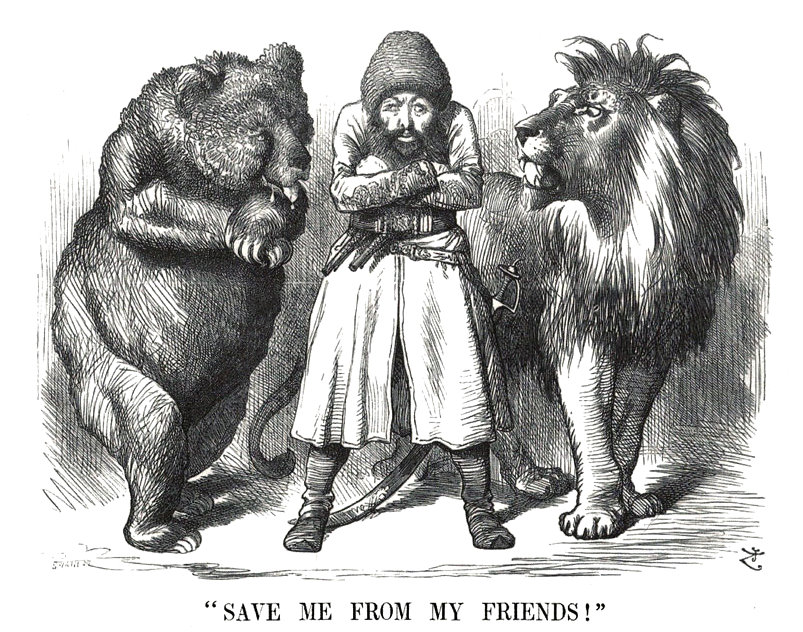
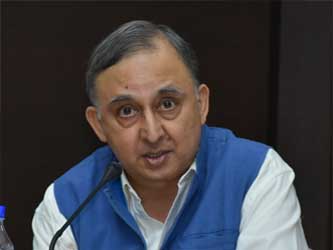

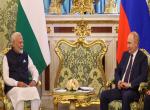


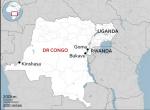
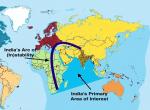

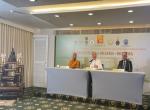
A very well concepted and thorough article although could have included the aspects of military domination for various benefits to be accrued by the Governments trying to gain an entry into the weapon market
Post new comment